These fermented shaved carrots make a healthy probiotic-rich, tangy and fragrant carrot salad that can be served as a side dish, topping for tacos, burgers, and other favorite main dishes.
Lacto fermented shaved carrot salad recipe – the shaved carrots are seasoned with spices like garlic, paprika and coriander then fermented until it gets a tangy spicy taste.

Benefits Of Making This Fermented Carrot Salad
- Versatile Use: Pairs well with grilled meat, fish, or can be used as a salad ingredient, burger, or taco topping. I usually use carrots combined with other veggies when fermenting such as this red cabbage sauerkraut, but I wanted to try fermenting them separately, so here we go!
- Rich in Probiotics: Fermenting carrots introduces beneficial bacteria that support gut health by populating it with “good” bacteria.
- Boosts Nutrient Absorption: Lacto-fermentation increases vitamin levels and improves the digestibility of the carrots, aiding in better nutrient absorption.
- Promotes Digestion: The lactobacilli in fermented foods help break down food and improve digestion while fighting harmful bacteria.
- Tangy Flavor: The lactic acid produced during fermentation gives the carrots a tangy, slightly spicy flavor that enhances bland dishes.
Related: Simple Easy Cabbage and Carrot Salad

Heads up: some links are affiliated & I may receive a small commission from qualifying sales. For more info see my disclaimer policy.
How To Make Fermented Shaved Carrot Salad
There are two steps in making this fermented carrot salad.
Step1. First Ferment The Carrots
- First I’ll ferment the carrots and then I will be adding the rest of ingredients to enhance it’s flavor.
- To get these beautiful paper thin carrot ribbons we need to shave the carrots by using a vegetable peeler or a mandoline slicer.
- In a cup mix the salt (I’m using grey Celtic sea salt) with 2 oz (30ml) of filtered water, add a touch of sauerkraut juice (as a fermenting starter) – about 2 tablespoons. Then pour this mixture over the carrot ribbons and massage until everything is evenly coated.
- Press the shaved carrots into a clean jar and let them ferment for 4-6 days. It will depend on the room temperature. Make sure the carrots are submerged under the liquid by placing some weight on top. I used a smaller jar filled with water, see picture below. Cover with a clean cheese cloth or coffee filter to prevent any dust getting in while fermenting.
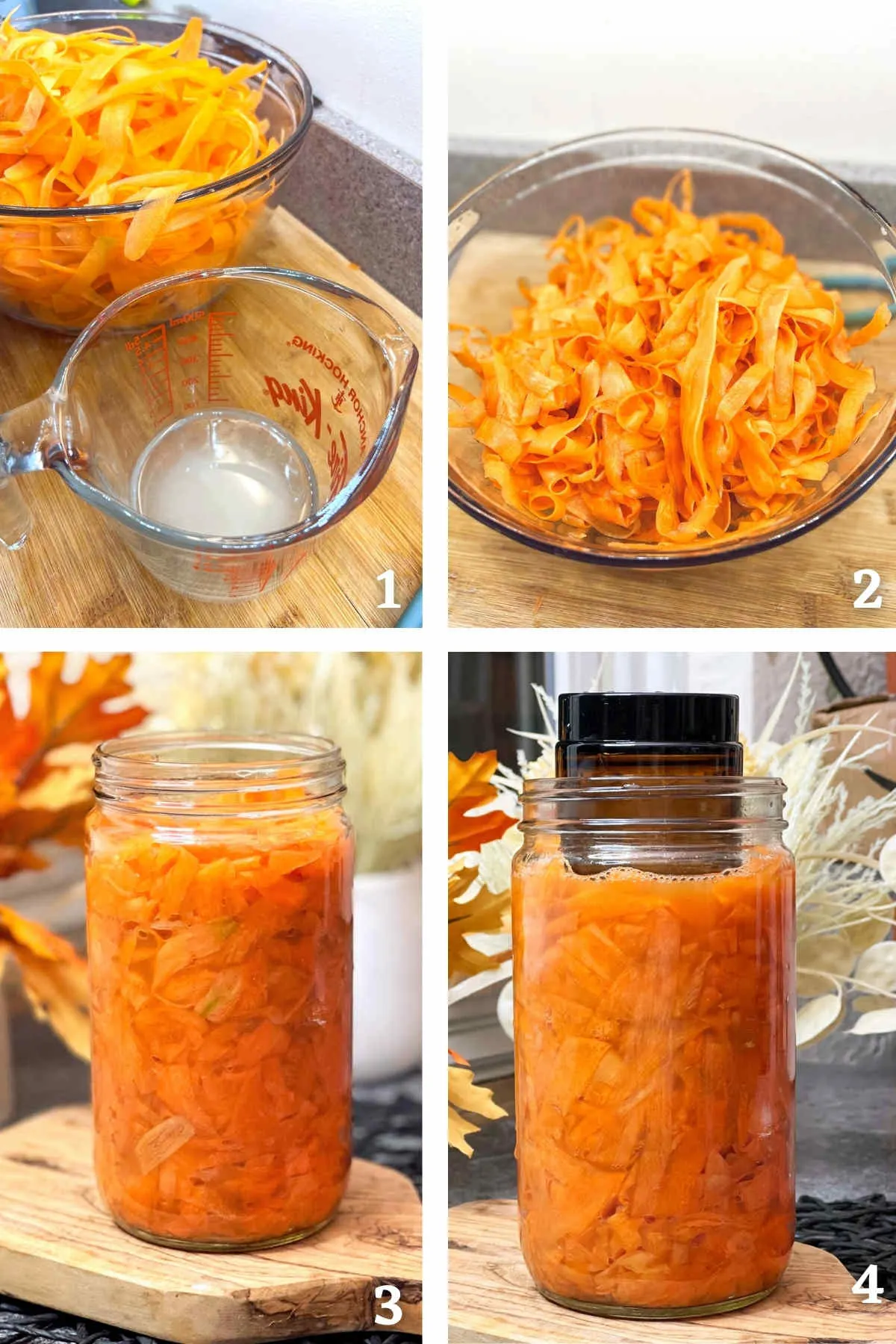
Step 2. Add Spices For Flavor And The Rest of Ingredients
- Once the carrots are nice and sour (picture no 5 and 6), we can add the spices and the rest of ingredients in order to boost their flavor.
- First we need to strain the fermentation liquid (picture 7 and 8).
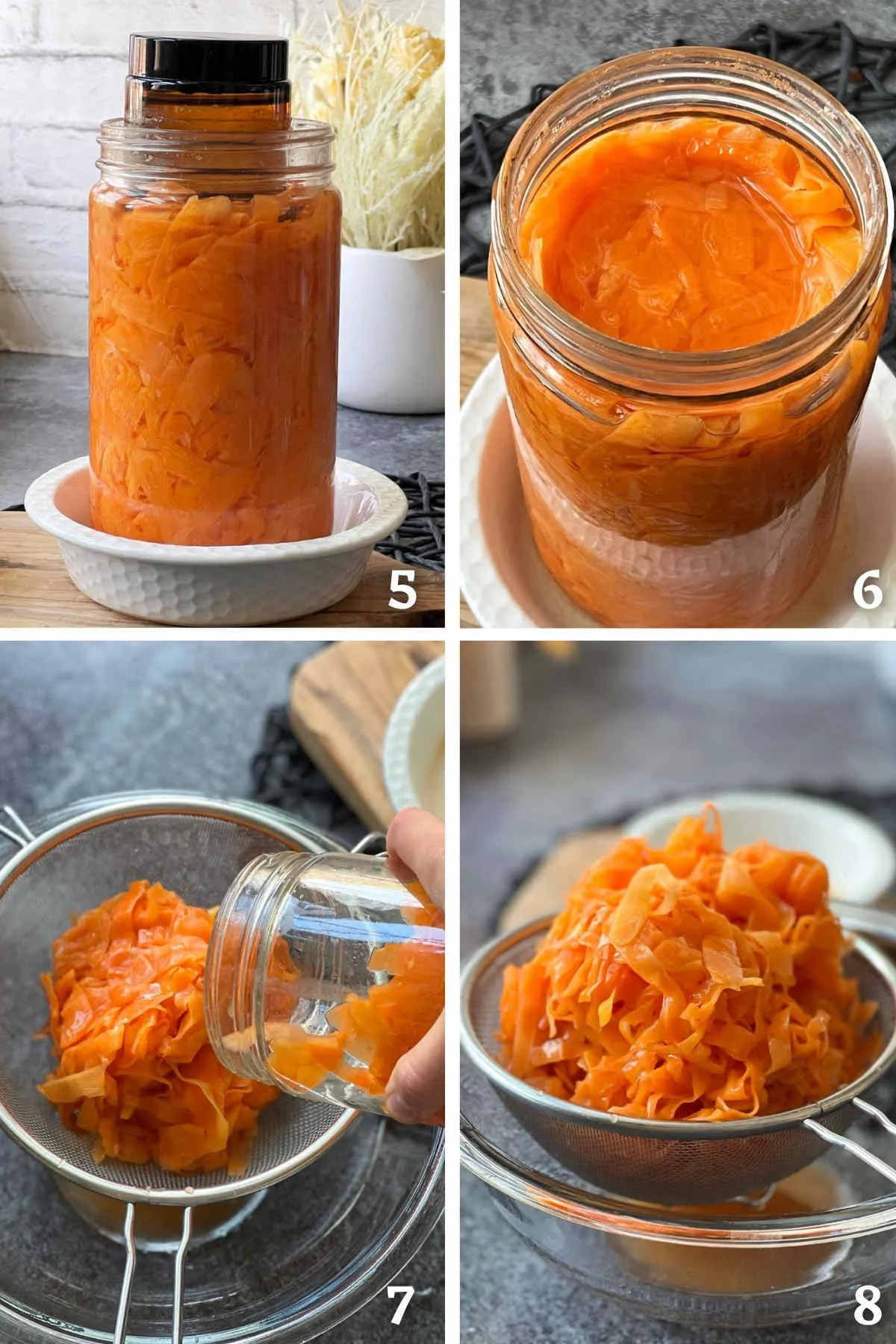
- Meanwhile heat a skillet with 1/4 to 1/3 cup of oil. Use a healthier oil like olive oil or a flavorless variety like avocado oil or grapeseed oil.
- And cook some roughly sliced onion (about 2 medium or 1 extra large) in that oil until its golden brown and fragrant.
- Remove the cooked onion from the skillet with tongs and let the oil strain into a small bowl (picture 9 and 10). Discard the onions or use them for a different recipe.
- In the same skillet with the remaining oil saute the minced garlic very briefly (up to 1 minute) and remove from heat, let it cool (picture 11).
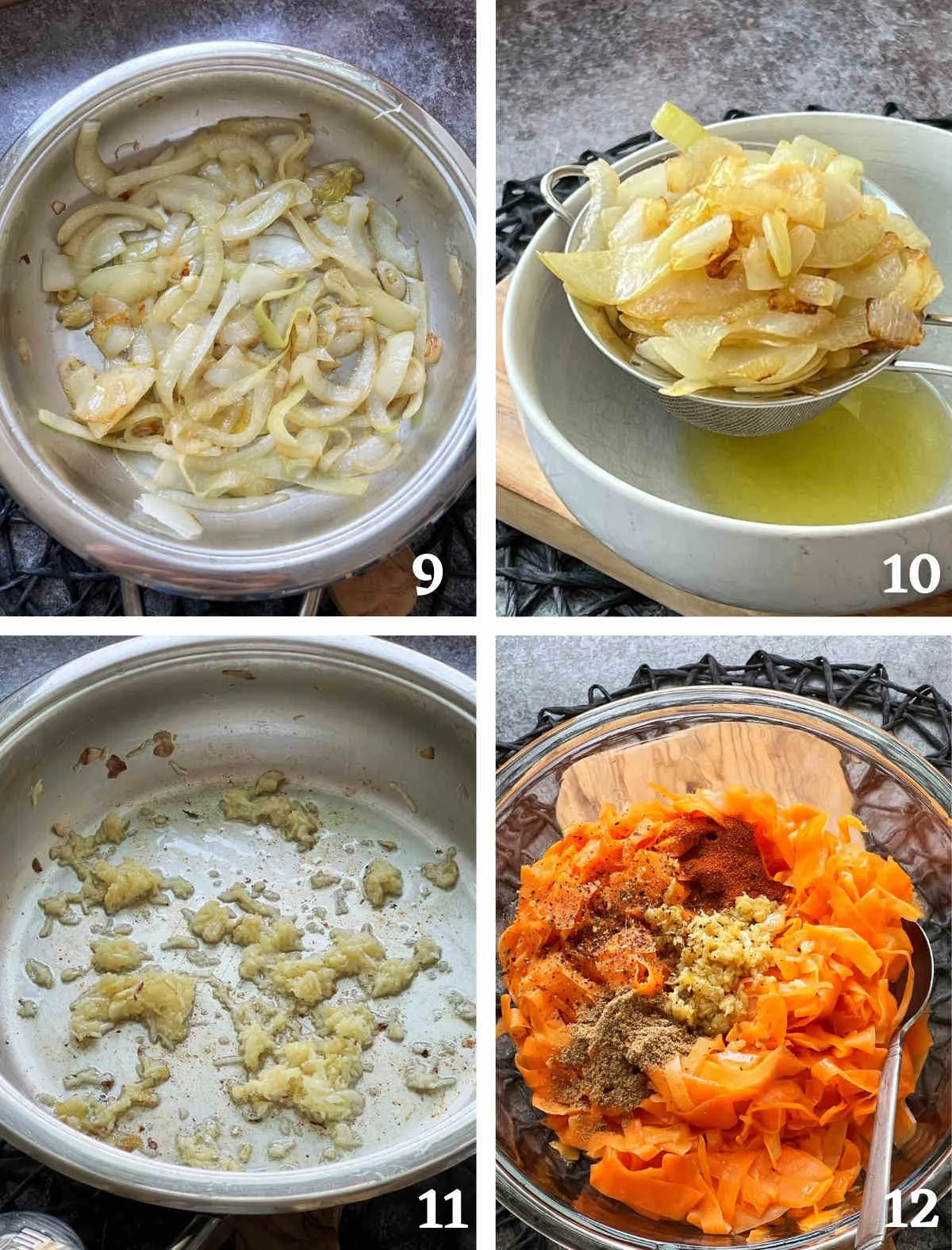
- Add the strained oil and the sauteed garlic (with oil) to the fermented carrots.
- Then add the spices (coriander, paprika/or smoked paprika, ground black pepper and a touch of cayyene pepper if you prefer it spicy);
- Additionally you can include some maple sugar (or bown sugar) – about 2 tablespoons if you like. It takes this salad’s flavor to the next level.
- Then mix well (gently) until every carrot ribbon is coated with the mixture.
- From here you can play with extra seasonings and add more spicyness (some dry red chili pepper) sweetness (sugar) or sourness (vinegar) or other herbs.
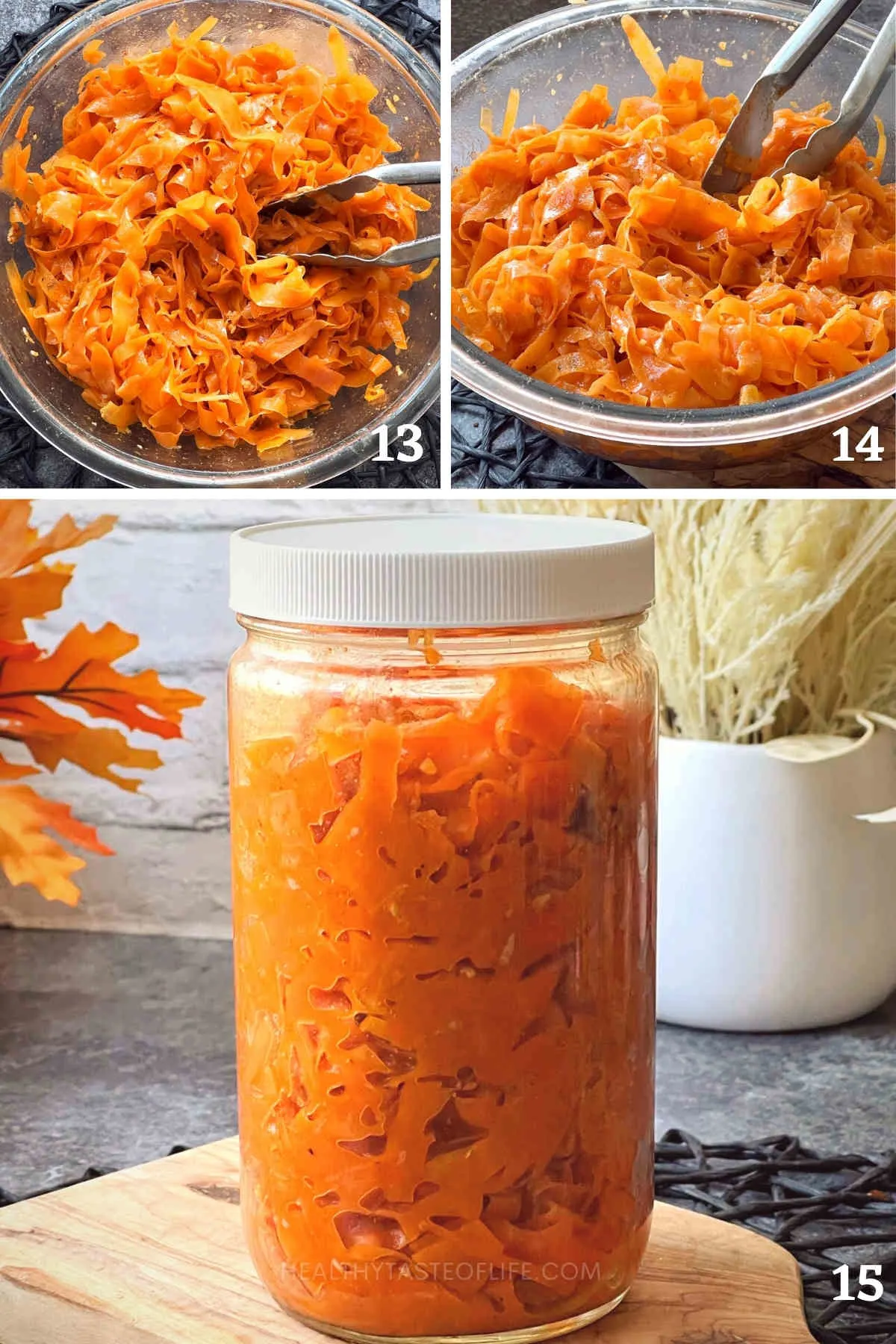
You can adjust the seasonings according to your taste. I like my fermented carrot salad a little garlicky but not too overpowering, sour and sweet, and a little salty which comes perfectly when fermented.
Transfer the assembled carrot salad into the same jar it fermented (no need to wash it) see picture 15. Or split into smaller jars.
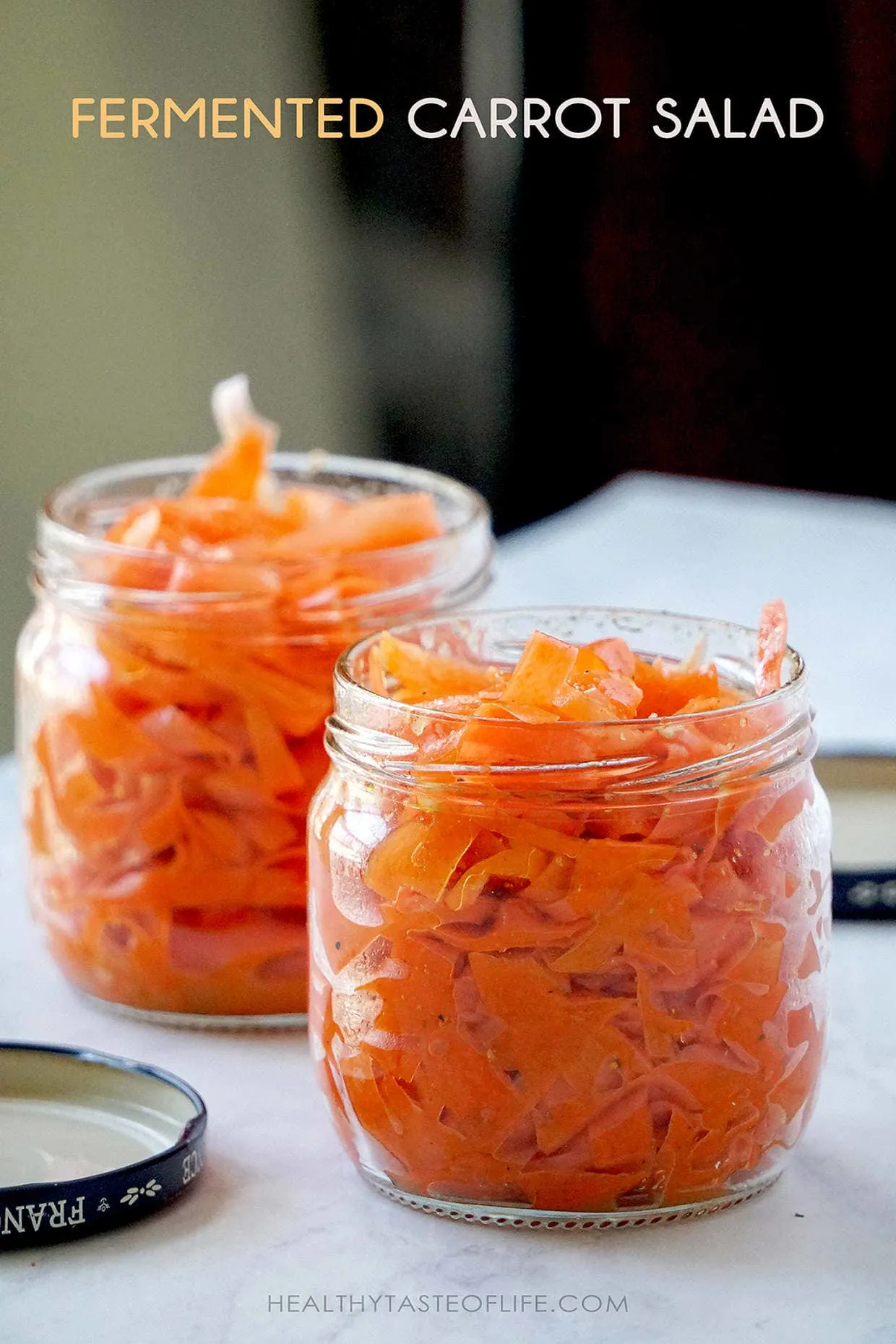
How to Store and Serve Fermented Carrot Salad
Once your fermented carrot salad is ready, it’s essential to store it properly to maintain freshness and flavor. Keep it in an airtight jar in the refrigerator to slow down the fermentation process.
It can last for several weeks, even months, with its tangy flavor deepening over time.
You can serve this salad as a side dish with meals, add it to salads for extra crunch, or use it as a topping for sandwiches, tacos, or burgers to boost their flavor and nutritional value.
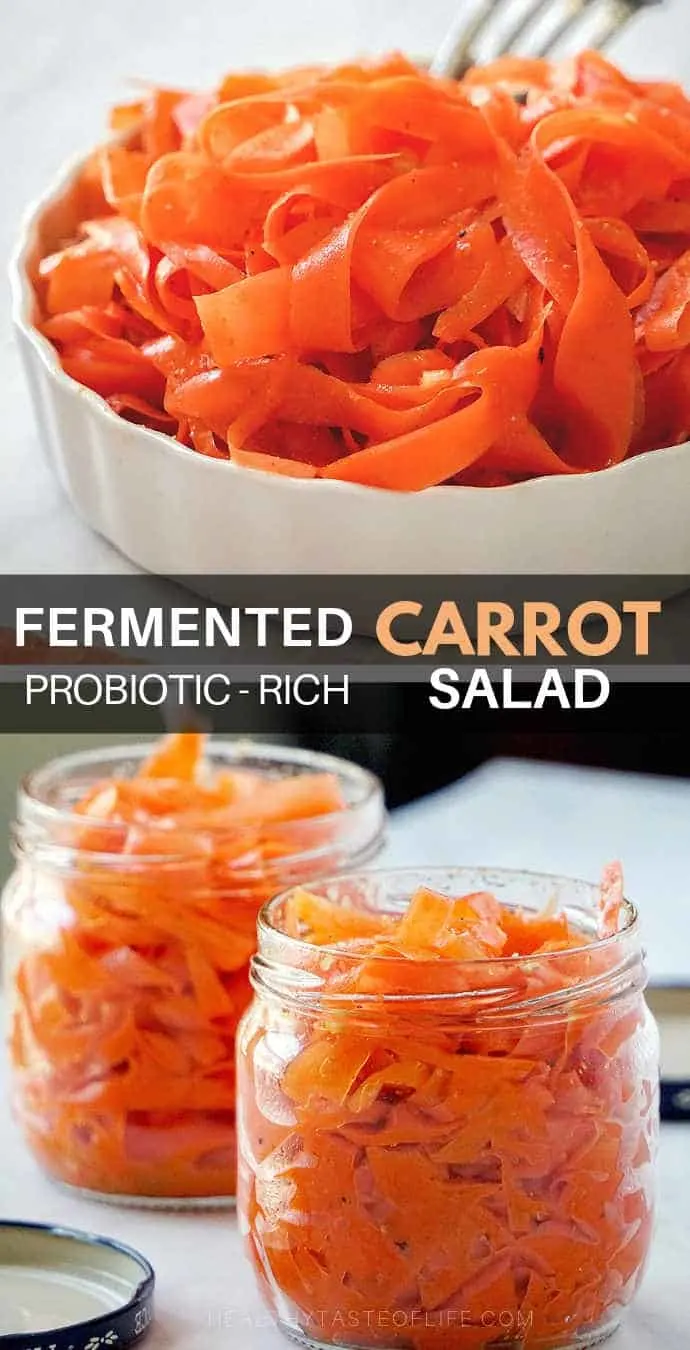
Tips for Customizing Your Fermented Carrot Salad
- Customizing your fermented carrot salad is easy and can cater to a variety of tastes. For a spicier version, consider adding ginger, more garlic, or chili flakes to the fermentation mix.
- If you prefer a diverse flavor, pair carrots with herbs like dill or parsley. You can also experiment with other vegetables like beets or turnips for added color and texture.
- Adjusting flavors allows you to create a fermented salad that complements any meal or personal preference while still retaining its health benefits.
FAQs
When the carrots are fermented properly, and stored in a dark, cool location at a constant temperature, they can keep for anywhere between 6 and 18 months.
If you’re not sure the fermented carrots are still good, check the color. The top layer should be the same color as the bottom layer (this is a major indicator of when things are going bad – the classic change is that the top layer will darken or turn gray). Plus the smell should be the same, the texture – mostly crisp, and the flavor boldly sour, not sulfurous.
The growth of lactobacilli during lacto-fermentation of carrots leads to an increase in vitamin levels and make the fermented carrots more digestible. These “friendly” bacteria can help us break down food, absorb nutrients better, and fight off “unfriendly” organisms that might cause diseases.
Any fatty foods (meat, eggs, cheese, avocado) combines well with fermented veggies. Add these fermented carrots to burritos, wraps, sandwiches and burgers. Add some acidity to the soup. Incorporate them into salads or top off green salads. Great for poke bowls, such as this quinoa poke bowl with shrimp.
What You Could Enjoy This Fermented Shaved Carrots With
Tip: You can ferment carrots in many forms: sticks, julliened, rounds but I like them “shaved”, this makes them pleasing to the eye.
If you made this fermented shaved carrot salad please leave a comment below and share your experience! I would love to know your opinion!
Also Try
- Fermented Watermelon Recipe (Vs Pickling)
- Fermented Fresh Fish (Mackerel) Recipe
- Fermented Red Cabbage (Sauerkraut)
Printable Recipe
Fermented Shaved Carrot Salad
Ingredients
1 Step: Carrot Lacto Fermentation
- 10 medium carrots - shaved (about 800 grams)
- 2 tsp sea salt - I used Celtic sea salt
- 2 tbsp sauerkraut juice - from fermented cabbage
- 2 oz filtered water
2 Step: Salad Assembling
- 1 large red onion, sliced - or 2 medium
- 7 large garlic cloves - finelly minced
- ¼ cup oil - olive or avocado oil or grape-seed oil
- 2 tsp coriander powder
- ½ tsp black pepper - ground
- 1 tsp paprika - or smoked paprika
Optional
- 2 tbsp maple sugar - or syrup
- ⅓ tsp cayenne pepper - for spiciness
- 2 tbsp apple cider vinegar - for more sourness
- Add additional salt if desired
Instructions
For fermenting the carrots
- Using a vegetable peeler, shave each carrot into long paper thin strips by using a vegetable peeler or a mandoline slicer. Place the shaved carrots into a bowl.
- Add the salt and sauerkraut juice to the water, mix until salt dissolves. Pour over carrots and mix with your clean hands until the carrots are nicely coated with the mixture.
- Press the mixture tightly into a jar so that the carrots release more juice. Pour the remaining liquid over the carrots. Make sure they are submerged completely underneath the liquid.
- Add some weight if necessary to keep them submerged at all times while fermenting. Cover the jar with a coffee filter secured with a rubber band.
- Let it ferment at room temperature (~65°F) for 4-5 days until they have a sour pickled smell.
- Once the carrots are done, check if there is no white film/residue, mold or an unpleasant smell.
- If there are small amounts of white film forming on pieces that are sticking out of the brine, I just throw those pieces away. If there's is more than that, and it smells bad, throw the whole thing away.
To Finish The Salad:
- If your carrots have successfully fermented, strain in a colander. And place into a bowl.
- Meanwhile heat a skillet with 1/4 to 1/3 cup of oil. Use a healthier oil like olive oil or a flavorless variety like avocado oil or grapeseed oil.
- And cook the roughly sliced onion in that oil until its golden brown and fragrant.
- Remove the cooked onion from the skillet with tongs and let the oil strain into a small bowl. Discard the onions or use them for a different recipe.
- In the same skillet with the remaining oil, saute the minced garlic very briefly (up to 1 minute) and remove from heat, let it cool.
- Add the strained oil and the sauteed garlic (with oil) to the fermented carrots.
- Then add the spices (coriander, paprika/or smoked paprika, ground black pepper and a touch of cayyene pepper if you prefer it spicy).
- Additionally you can include some maple sugar (or bown sugar) – about 2 tablespoons if you like. It takes this salad’s flavor to the next level.
- Then mix well (gently) until every carrot ribbon is coated with the mixture. From here you can play with extra seasonings and add more spicyness (some dry red chili pepper) sweetness (sugar) or sourness (vinegar) or other herbs.
Storing
- Transfer the assembled carrot salad into the same jar it fermented (no need to wash it). Or split into smaller jars, and move to refrigerator.
- The flavor will continue to develop in the next few days. Before serving let it develop the flavor for at least 12 hours.
- It can be kept in the fridge for up to a month or two.
Notes
- Make sure all your jar and utensils are clean before you proceed to avoid contamination.
- If you have a lot of white film/residue, you may not have added enough salt or it was left out too long.
- Be sure that the carrots are submerged the entire time, the jar is covered.
- If you don’t use a weight to keep veggies submerged, stir the surface daily to prevent mold from forming on the surface, or push the carrots that are sticking out of the brine back down / shake them up each day.
- Make sure to always use purified water when fermenting vegetables. Tap water contains chemicals like chlorine that harm good bacteria.
Nutrition
The information shown is an estimate provided by an online nutrition calculator.
©HealthyTasteOfLife. Content and photographs are copyright protected and need prior permission to use. Copying and/or pasting full recipes to other websites and any social media is strictly prohibited. Sharing and using the link of this recipe is both encouraged and appreciated!

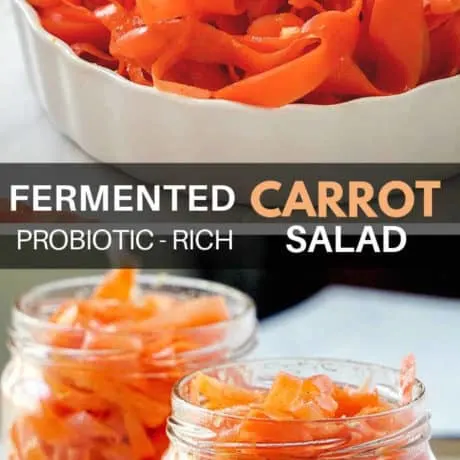
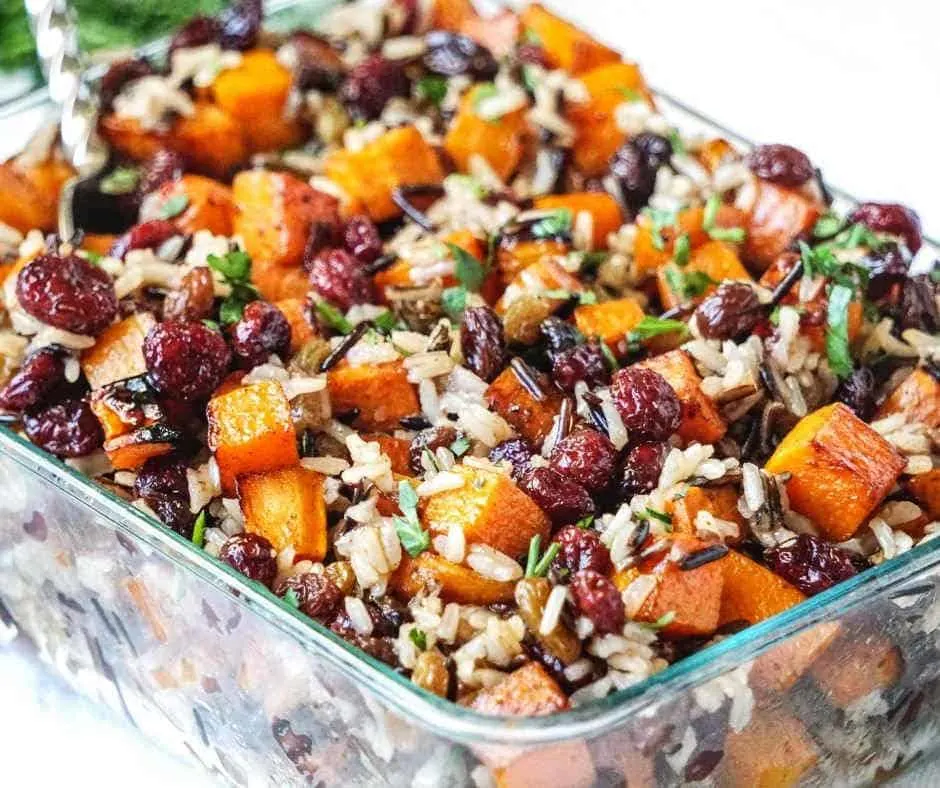



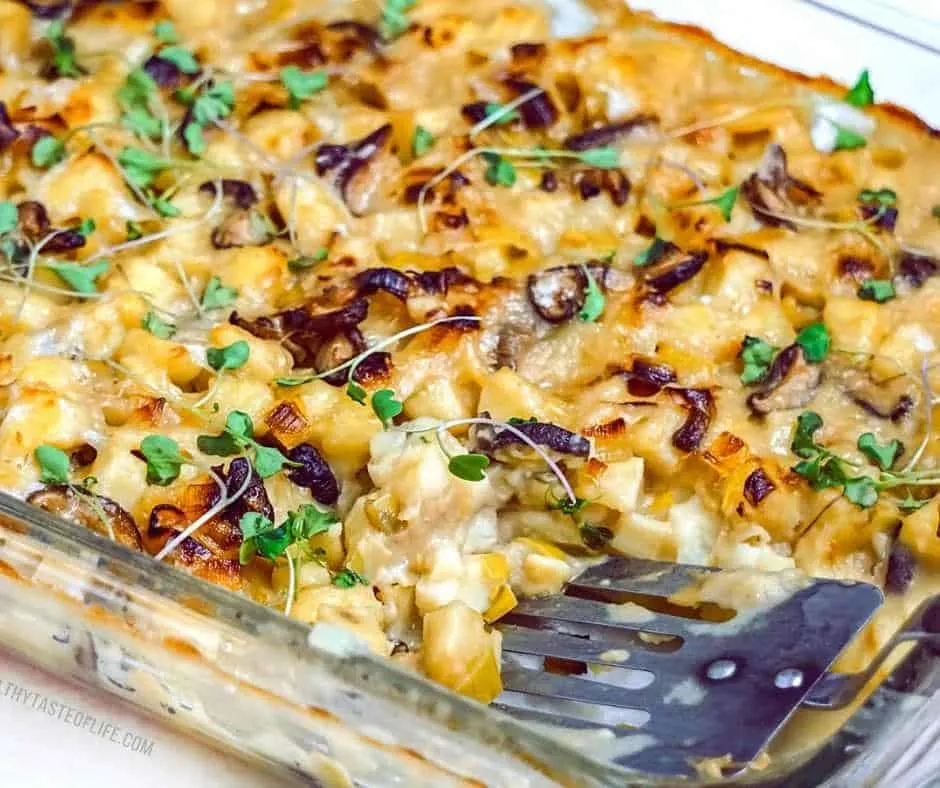
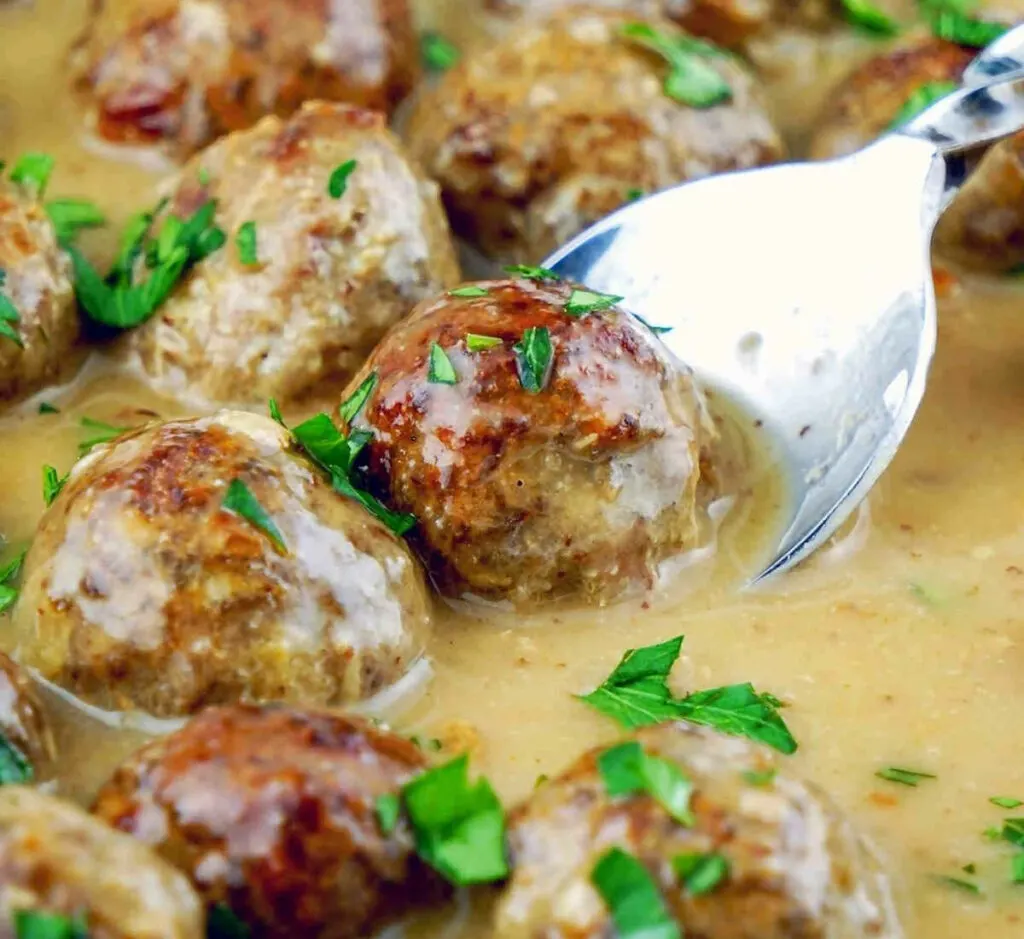
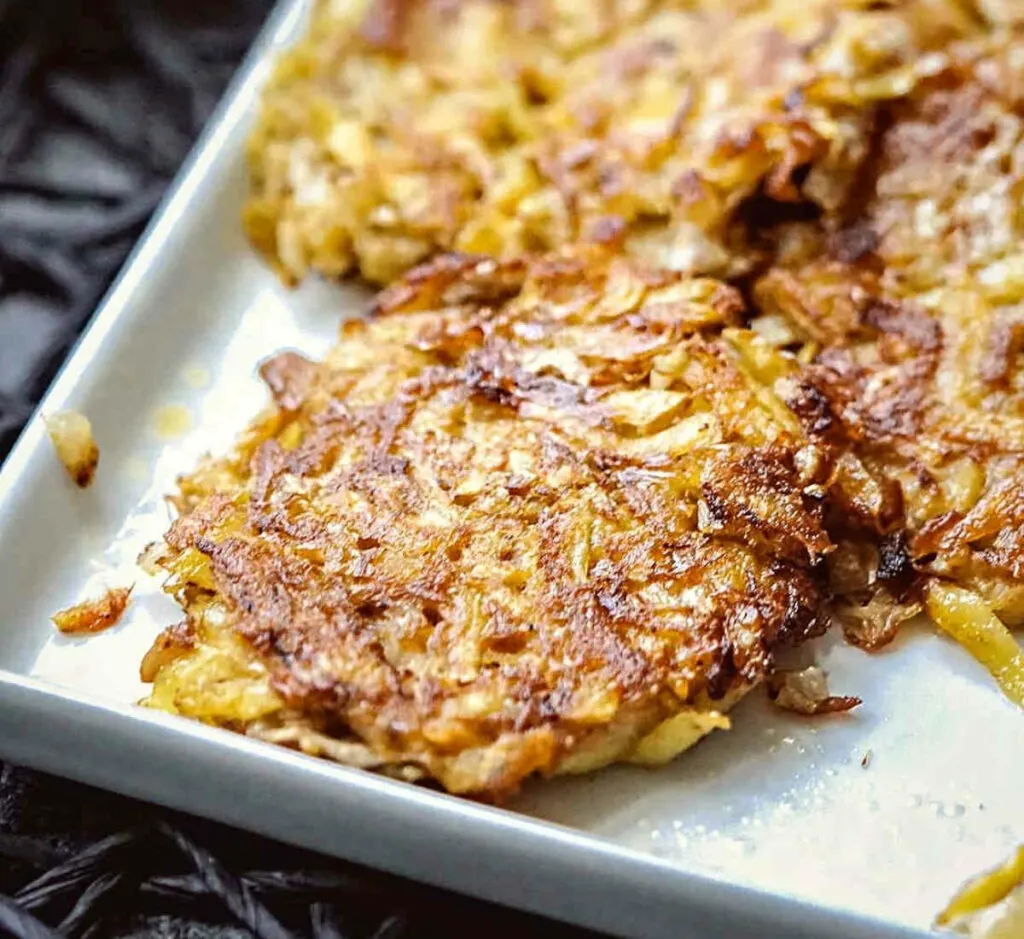



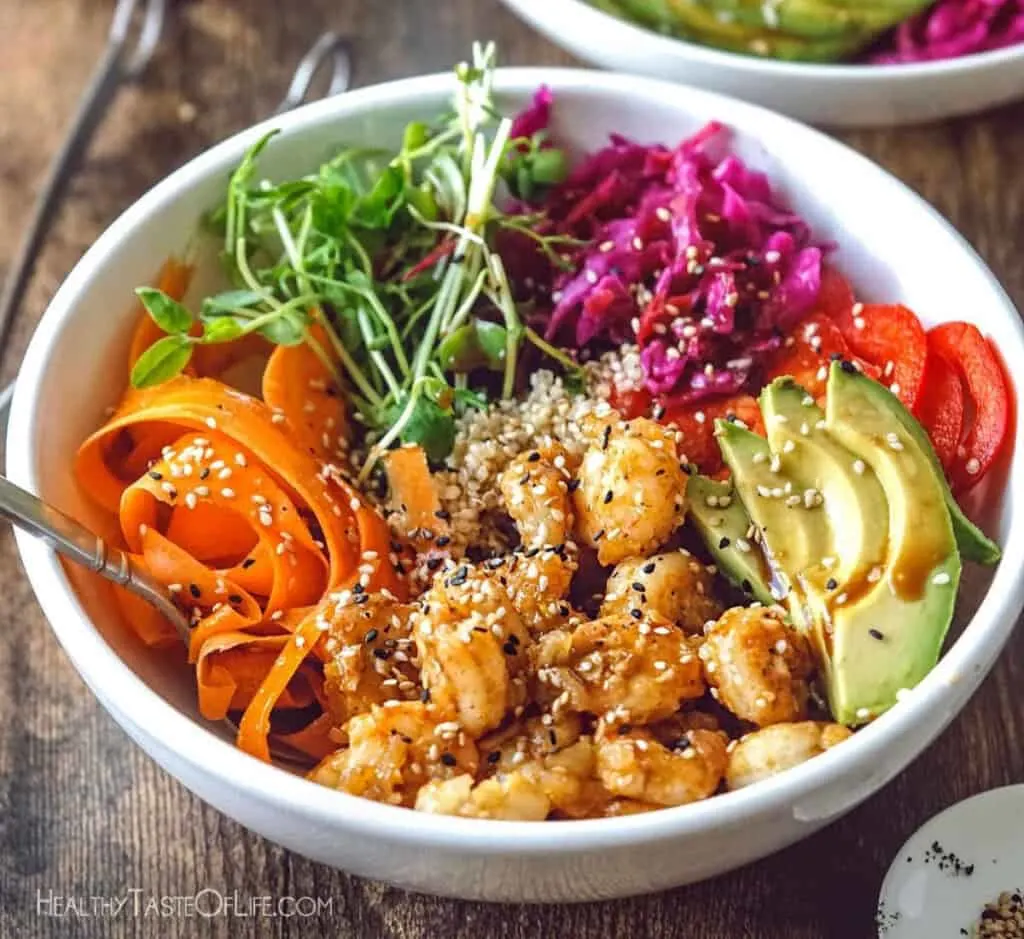

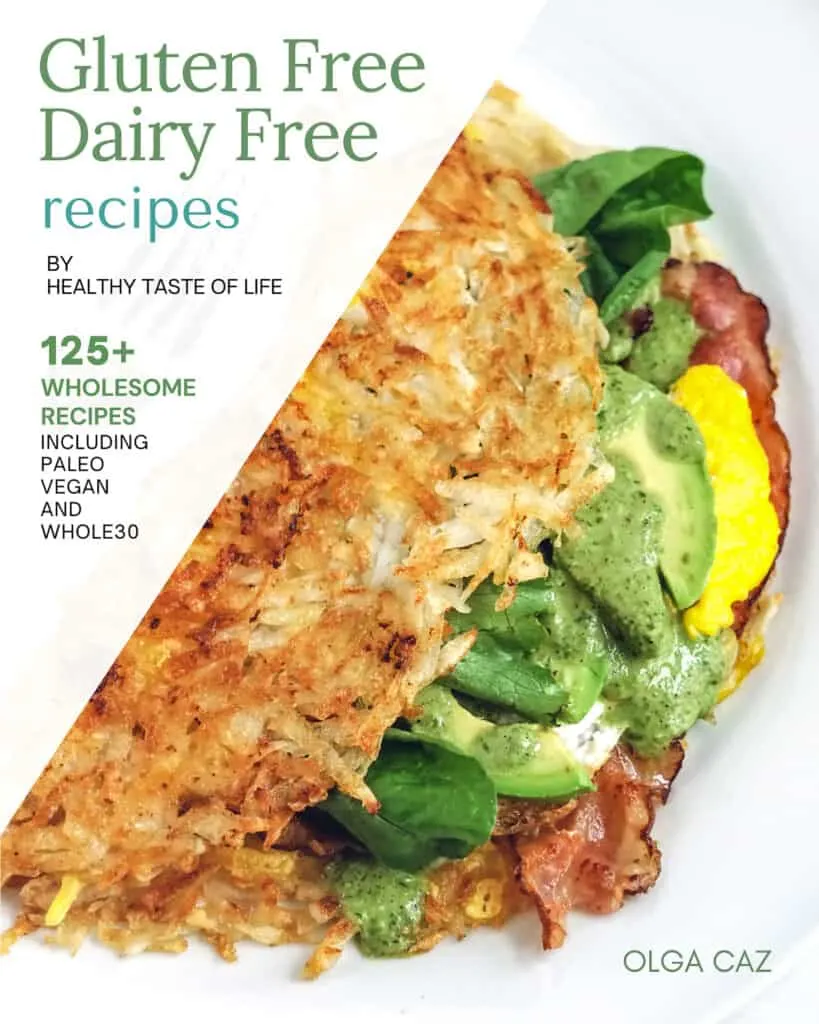
Carmela
Tuesday 16th of July 2024
Can you use kefir liquid to ferment?
HealthyTasteOfLife
Friday 23rd of August 2024
I never tried this option :)
JoAnn
Friday 16th of February 2024
Can the carrots be eaten on their own, after they're fermented, without adding the onion mixture?
HealthyTasteOfLife
Tuesday 14th of May 2024
Sure, if you're satisfied with the taste!
Laure
Monday 19th of December 2022
What do I do with the strained brine? Can I keep it to use on vegetables again?
HealthyTasteOfLife
Thursday 22nd of December 2022
Usally the brine from a saurkraut can be used on other recipes, I'm not sure how this would work in this case.
Lisa
Saturday 10th of December 2022
I absolutely loved this recipe! Thank you for sharing it. I put it on my salads, or use instead of lettuce on my burgers...it's amazing.
Cindi
Monday 21st of March 2022
What can be used in place of sauerkraut juice? I don't have any fermented items right now. Thanks,
HealthyTasteOfLife
Tuesday 22nd of March 2022
Sorry I don't think there is an easy substitution, you either make your own ferments or you need to buy a vegetable starter culture, they are usually sold in small pouches.